LG 29.7 cu. ft. Smart French Door Refrigerator, Door-In-Door, Dual Ice Makers with Craft Ice in PrintProof Stainless Steel
Makes slow melting round Craft Ice, crushed ice & standard cubes. Built-in look with counter depth and fingerprint resistant finish. Smart Home & Wi-Fi enabled to control & monitor with phone app.
LG’s exclusive Door-in-Door refrigerators have everything you need to become the ultimate home entertainer. Dual ice makers with Craft Ice automatically create crushed, cubed and LG’s exclusive slow-melting round ice on demand, for upscale, craft drinks at home-without the work. To ensure you’re serving guests the freshest foods, innovative LG cooling technologies work together to dramatically extend the life of your produce.
- With 30 cu. ft. of more usable space, you can save time and stock up on your club store fresh and frozen faves in 1-trip with room to store them all when you get home
- Offering quick and easy access to favorite foods, the popular door-in-door design gets even better with adjustable bin that smoothly glide up and down to fit snacks and drinks of all sizes
- From pitchers to pint glasses, this external filtered ice and water dispenser can accommodate just about any container, the water and ice dispenser in this LG refrigerator is one of the tallest around, measuring in at an ultra-accommodating 12.6 in. the convenient measured fill feature lets you select the exact amount of filtered water in ounces to save you the time and hassle of measuring for drinks mixes, recipes and more, plus, the brushed metal finish touch display includes the easy-to-operate temperature controls and refrigerator options, also features LG’s new pharmaceutical water filter, NSF certified to reduce more contaminants than our previous filters, for freshness you can taste
- Dual ice makers, dispensed from the door and located in the freezer compartment, automatically produce ice so you never run out, creates standard ice cubes, crushed ice and LG’s exclusive round craft ice-crafted to melt slower, chill more efficiently, and help beverages taste their best for longer, from craft cocktails and whiskey to soft drinks, lemonade, even iced coffee, give your beverages the perfect ice
- Ice makers are great, but not if it means you can’t fit all of your food in the fridge, the slim space plus ice system provides the most shelf space and allows even more space for door bins
- Cool guard metal interior panel wall helps maintain cold air while adding a premium look
- Located in the top of the fresh food section, the door cooling and vent extends the reach of LG’s smart cooling system, blasts of cool air reach all areas of the refrigerator, including the door, to help maintain consistent temperatures from top to bottom, it helps keep all foods fresh and flavorful and keeps produce fresh up to 2X longer
- Smart cooling plus technology is designed to maintain superior conditions within the refrigerator, the linear compressor and dual evaporators react quickly to humidity and temperature levels and help keep your food fresher, longer, meanwhile, strategically-placed vents in every section help to surround your food with cool, fresh air no matter where you put it
- Located just below the humidity-controlled crispers, this full-width, temperature-controlled drawer makes party preparations a snap, store everything from deli platters to fruit trays at just the right temperature with one press of the touch pad controls, the lid opens automatically when you slide out the drawer for fast loading and unloading
- 3-tier organization freezer system can keep food organized and easily accessible, now you can prioritize what’s in your freezer so you can find anything fast
- Smart pull handle makes opening and closing the freezer quick and easy, all it takes is a simple lift of the handle for effortless access to your freezer
- Your food isn’t the only thing that stays fresh, only LG offers a 1-layer fresh air filter with dedicated fan that pushes cleaner, fresher air into the fridge
- LG refrigerators with thin Q technology will change the way you think – and the way you live, download the free thin Q app to your android or iOS device and let the possibilities unfold; receive notifications on your smartphone when the door is open or your water filter needs to be replaced, control refrigerator and freezer temperatures remotely, diagnose issues and get quick, expert advice, use the voice-activated features of google assistant or amazon alexa
- From making extra ice for tonight’s dinner party while you’re at work to adjusting temperatures with simple voice commands, LG refrigerators with thin Q technology will change the way you think and the way you live, simply download the free thin Q app to your android or iOS device and let the possibilities unfold, receive notifications on your smartphone when the door is open or your water filter needs to be replaced, control refrigerator and freezer temperatures remotely, diagnose issues and get quick, expert advice, or, use the voice-activated features of google assistant or amazon alexa, LG makes it easy to keep your cool in any situation, let the advantages of smart technology work for you
- Energy star qualified LG refrigerator exceeds federal energy standards to positively impact your energy bill, your energy consumption, and most importantly, the environment
Additional information
| Depth (Excluding Handles) | 34.12 |
|---|---|
| Depth (Including Handles) | 36.63 |
| Depth (Less Door) | 29.88 |
| Depth With Door Open 90 Degrees (In) | 48.5 |
| Height to Top of Door Hinge (in.) | 70.25 |
| Height to Top of Refrigerator (in.) | 68.88 |
| Product Depth x Height x Width (in.) | 36.625 x 70.25 x 35.75 |
| Refrigerator Width (In.) | 35.75 |
| Certifications and Listings | Energy Star |
| Manufacturer Warranty | 1 Year Parts & Labor, 5 Year Sealed System, Compressor 5 Year, 6-10 Year Linear Compressor Limited Warranty |

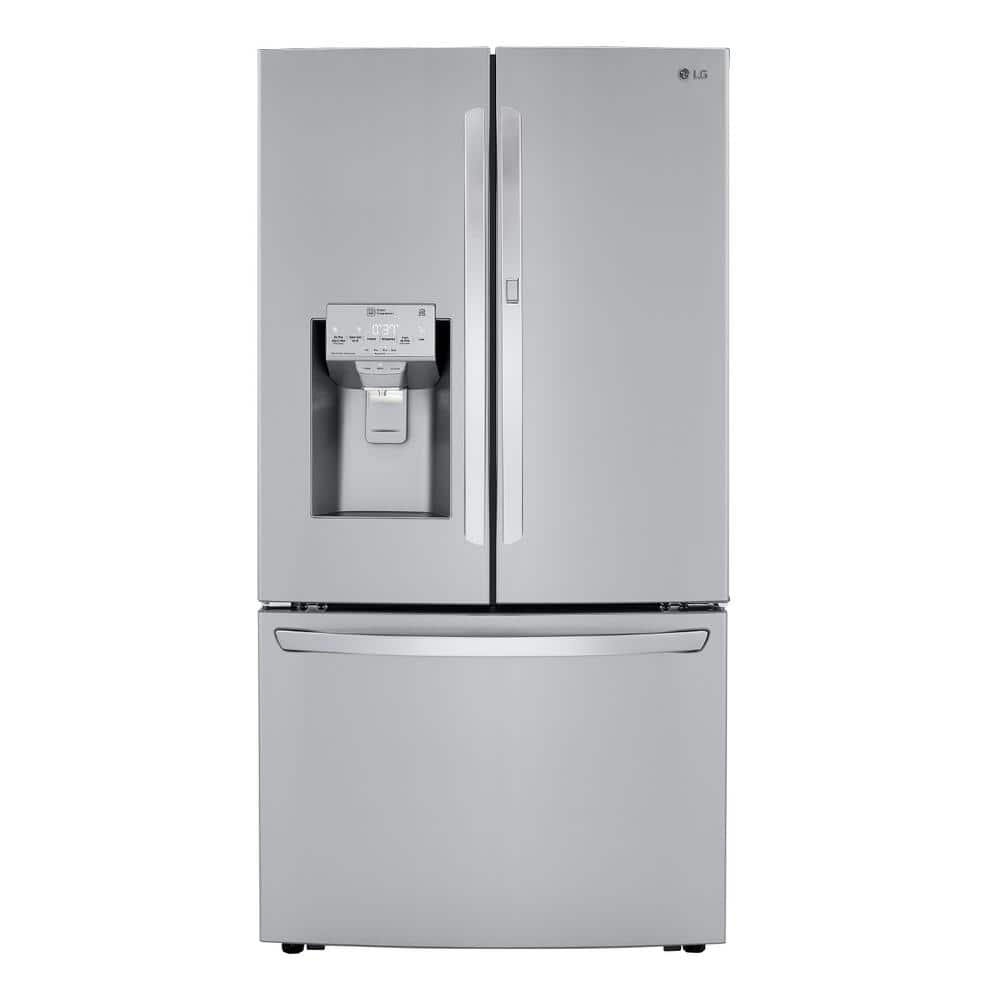
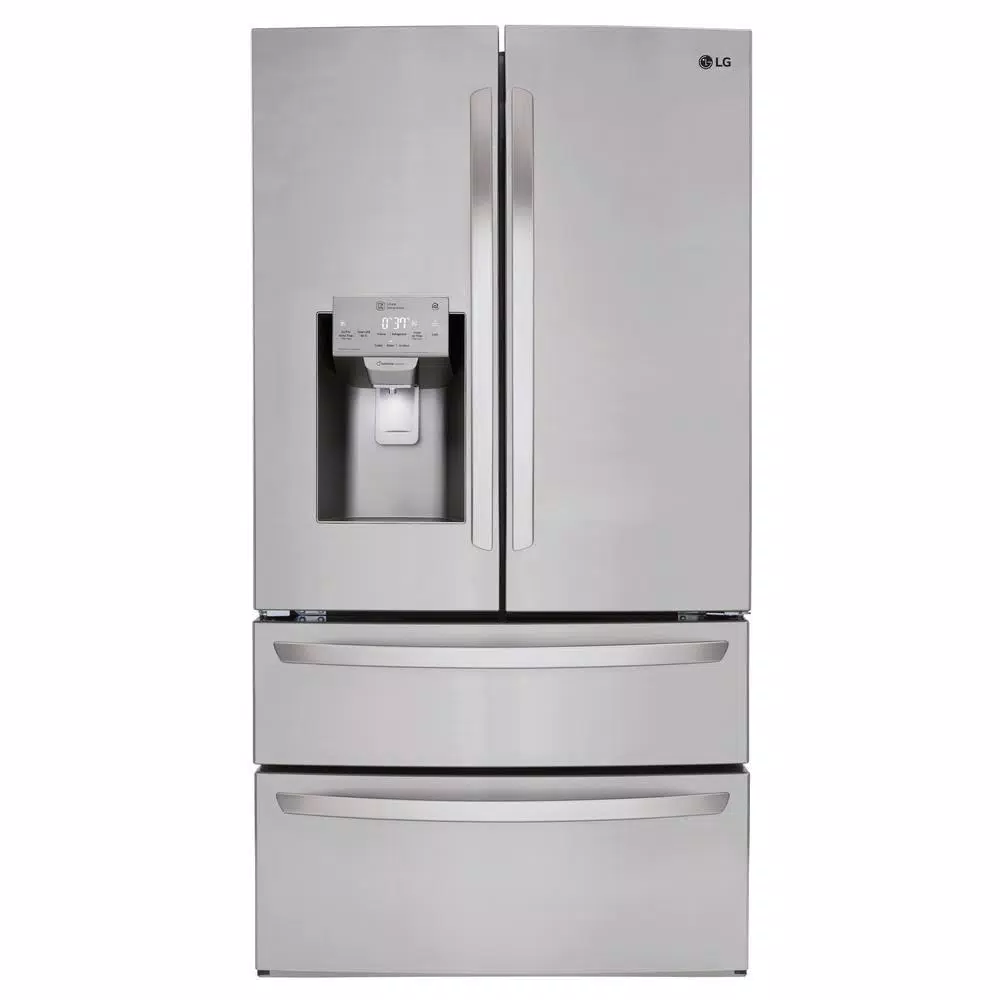
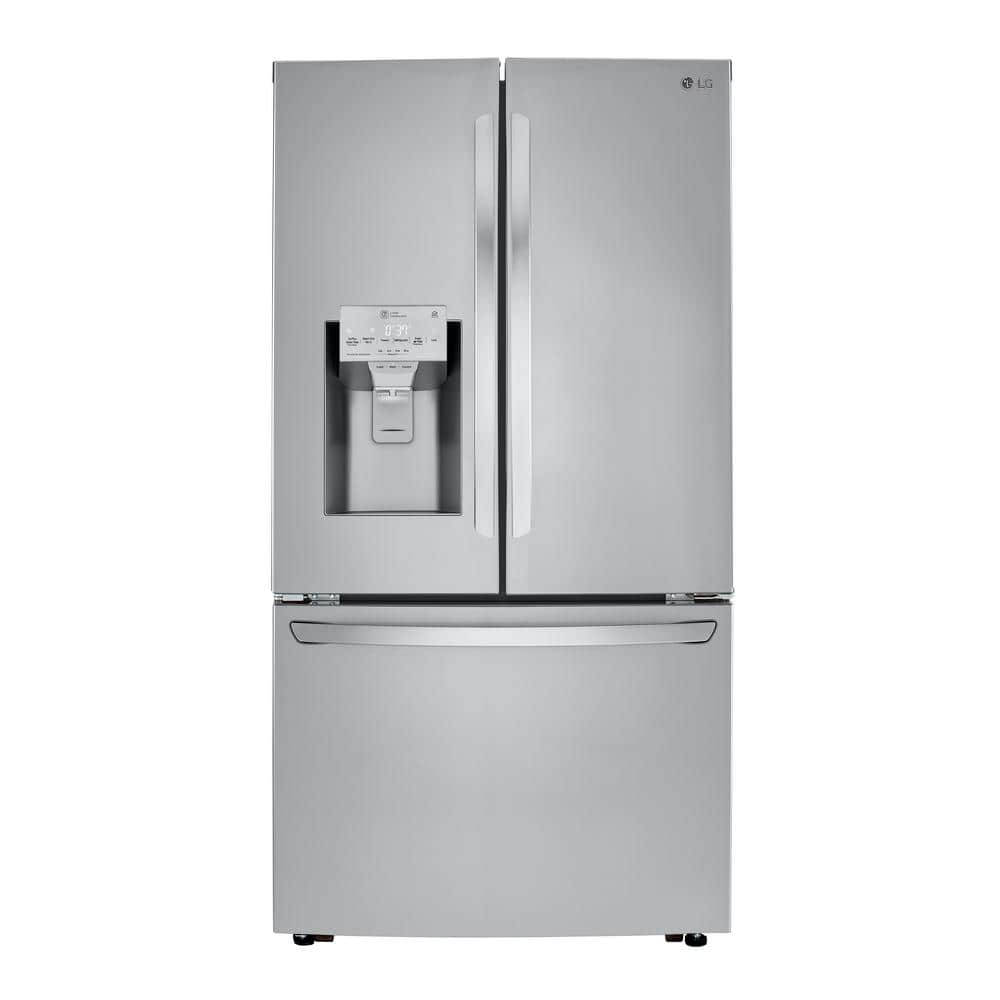
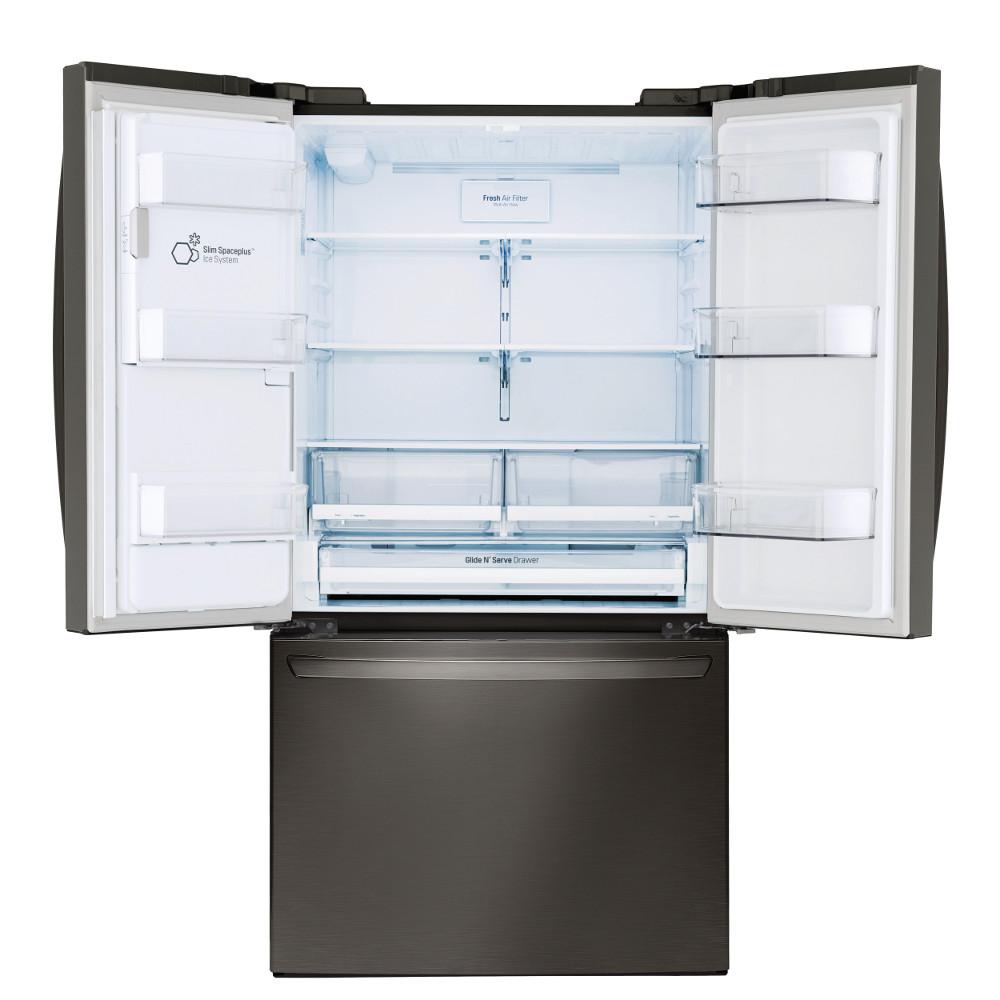
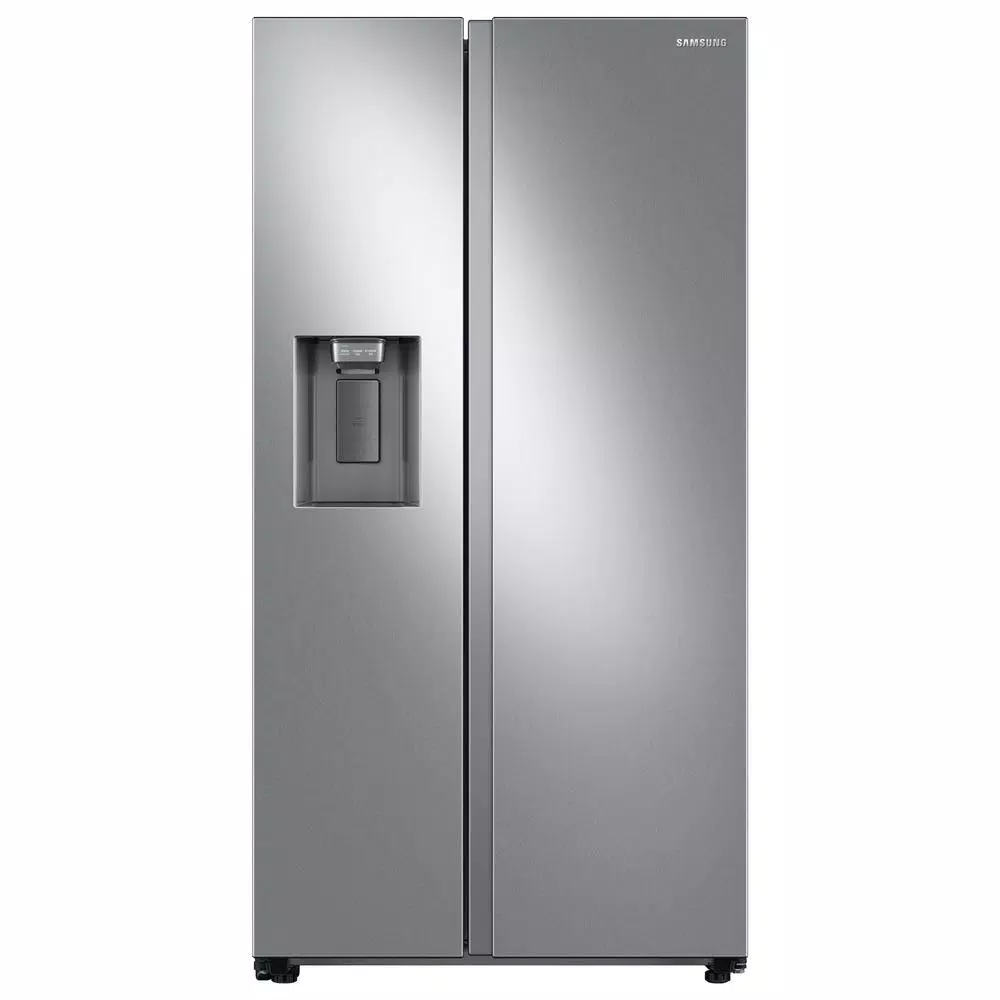
by James
Love this refrigerator. 5 full cu ft of space over our previous LG refrigerator (which was awesome as well, and still going strong, and is now our Garage Refrigerator). LG makes good products. Previous LG refrigerator was 16 years old, so I expect the same performance for this one. Love everything about it. Definitely recommend this refrigerator!!
by Cindy
We are loving this refrigerator! It replaced a 7 year old Whirlpool Gold that was a noisy disappointment from the moment we got it. The LG is quiet with lots of space for everything. The door in door is a great feature. Although I wasn’t convinced we needed craft ice, it does come in handy since the capacity of the regular ice maker is rather small. My only negative is the deli drawer. It is a large, deep drawer that could be very useful but it doesn’t pull out far enough and you can’t see what is in the back because the glass is cloudy.
by Bruce
So far this fridge is great. This is my 2nd LG french door and if this one is like the last (lost in a fire) this it will be a great fridge for a long time.
by Rodney
So far we love this fridge. The space and layout are amazing. Ice makers took a while to begin producing but all good now. I would recommend.
by Awill
Absolutely love this refrigerator! Second time buying an LG and am happy with my purchase
by Goin
I bought this 3 weeks ago and I’m amazed with it. It has a lot of room and everything works very good.